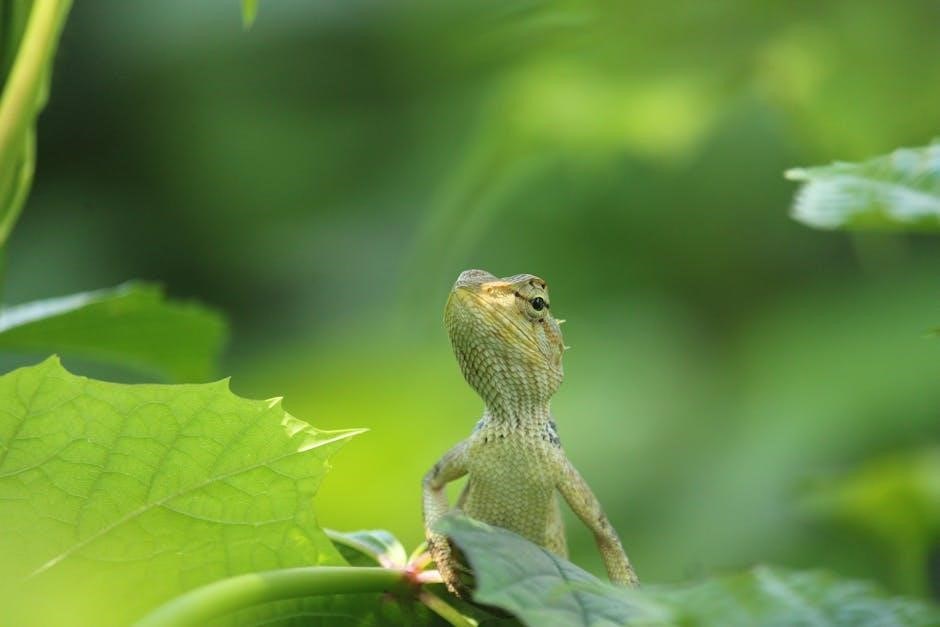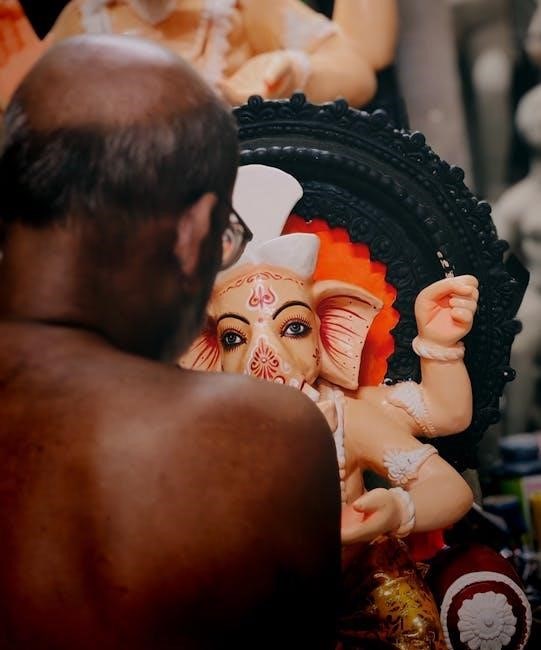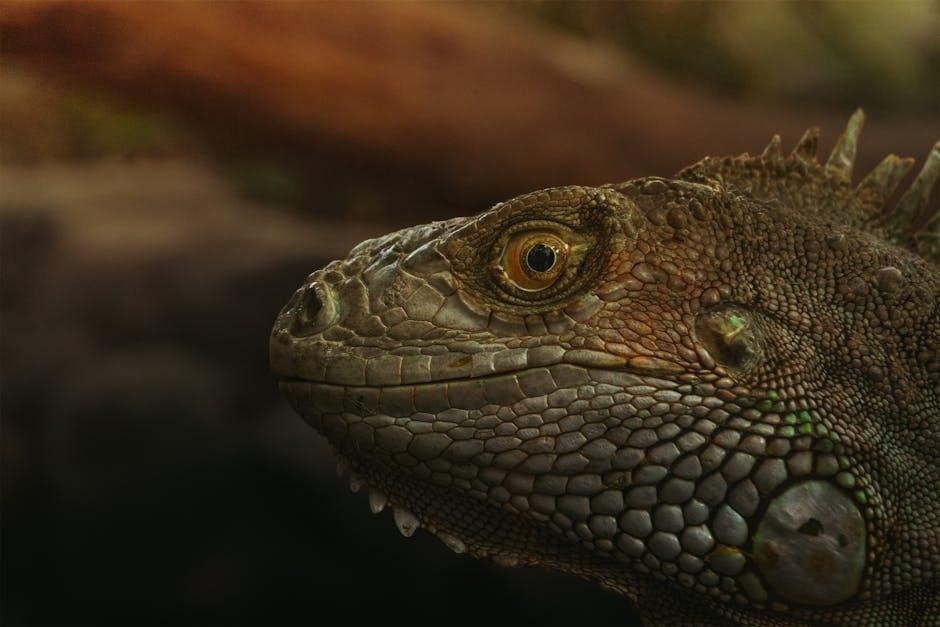
against the cult of the reptile god pdf
Against the Cult of the Reptile God is a classic D&D adventure module designed for novice players and Dungeon Masters․ Set in the village of Orlane, it explores mysterious disappearances and eerie occurrences, leading to a thrilling underground lair exploration․ The module includes detailed village maps, overland trails, and a challenging lair, making it a cornerstone of early D&D experiences․

1․1 Overview of the Module
Against the Cult of the Reptile God is a classic adventure module designed for the Advanced Dungeons & Dragons (AD&D) game system․ Created by Douglas Niles and published by TSR in 1982, it is intended for novice players and Dungeon Masters․ The module is structured for 4- of levels 1-3, making it an ideal introduction to the world of AD&D․ The story unfolds in the village of Orlane, which has been plagued by mysterious disappearances, economic decline, and an eerie atmosphere of fear․ Players are tasked with uncovering the sinister forces behind these events, leading them on a journey from the village to an overland trail and ultimately to the lair of the reptile god;
The module includes detailed descriptions of Orlane’s buildings, inhabitants, and key locations such as the Temple of Merikka․ It also features a challenging underground adventure, complete with maps and pre-generated characters for those new to the game․ The module emphasizes exploration, problem-solving, and combat, providing a balanced experience for early-level adventurers․ Its design encourages creativity and immersion, making it a timeless piece of AD&D history․

1․2 Historical Context and Significance
Against the Cult of the Reptile God holds a special place in the history of tabletop role-playing games, particularly within the Advanced Dungeons & Dragons (AD&D) ecosystem․ Published in 1982 by TSR, Inc․, it was one of the first modules designed specifically for novice players and Dungeon Masters, setting a precedent for introductory adventures․ Written by Douglas Niles, the module was part of the “N” series, which focused on providing accessible yet engaging content for new players․
The module’s significance lies in its balanced design, blending village-based intrigue, overland exploration, and dungeon crawling․ It introduced players to the basics of AD&D gameplay while offering a compelling narrative that emphasized mystery and suspense․ The module’s success influenced later publications, as it demonstrated the value of structured adventures for new players․
Today, Against the Cult of the Reptile God remains a cherished piece of gaming history, with its influence evident in modern adaptations and conversions for fifth edition D&D․ Its enduring popularity highlights its role in shaping the evolution of tabletop RPGs, making it a must-play for both retro enthusiasts and newcomers alike․
Background
Against the Cult of the Reptile God is set in the small, once-thriving village of Orlane, now plagued by mysterious disappearances and eerie occurrences․ The module introduces a caravan route through the Dim Forest and Rushmoors, setting the stage for a chilling adventure․ Published in 1982, it remains a classic․
2․1 Setting and World-Building
The module is set in the small, once-thriving village of Orlane, nestled between the Rushmoors and the Dim Forest․ Founded by settlers from Hochoch, Orlane was established near a temple dedicated to Merikka, the chaotic good goddess of agriculture․ The village thrived due to the fertile land, producing abundant crops․ However, its prosperity was short-lived, as strange occurrences and disappearances began to plague the community․
The setting is richly detailed, with the village surrounded by dangerous landscapes․ The Rushmoors, a stagnant and slime-coated wetland, and the Dim Forest, a dark and foreboding woodland, create a sense of isolation and danger․ A caravan track through the Dim Forest connects Orlane to nearby towns, but it is fraught with risks, including marauding ogres and goblins․ The module’s world-building emphasizes the contrast between the village’s former prosperity and its current state of fear and decay․

The mysterious decline of Orlane is central to the adventure, with rumors of poisoning, sinister forces, and monstrous creatures․ The setting provides a mix of rural village life, overland travel, and dungeon exploration, offering a diverse experience for players․ The module’s attention to detail, including descriptions of buildings and NPCs, immerses players in the world, making the adventure engaging and memorable․
2․2 Module Versions and Editions
Originally published in 1982 by TSR Hobbies, Inc․, Against the Cult of the Reptile God was designed for the Advanced Dungeons & Dragons (AD&D) 1st Edition․ This module, coded as N1, was part of the Novice series, aimed at introducing new players and Dungeon Masters to the game․ Over the years, it has seen various reprints and digital releases, ensuring its accessibility across different editions․
A 5th Edition conversion guide has been developed, adapting the classic adventure to the modern ruleset․ This guide updates monsters, spells, and encounters to align with 5th Edition mechanics, allowing contemporary players to experience the timeless story․ Additionally, a PDF version is available through platforms like DriveThruRPG, offering a convenient digital format for those who prefer it over physical copies․

While there may be fan-created adaptations for other editions, the primary official versions remain the original AD&D 1st Edition, the 5th Edition conversion, and the digital PDF release․ These versions ensure that Against the Cult of the Reptile God continues to captivate both veteran and new players, bridging generations of Dungeons & Dragons enthusiasts․
Key Locations
The module highlights two central locations: the village of Orlane and the Temple of Merikka․ Orlane, once thriving, now faces mysterious decay, while the Temple of Merikka serves as a sacred site tied to the village’s history and the cult’s dark influence․
3․1 The Village of Orlane
The village of Orlane is a central setting in the module, once a thriving agricultural community but now plagued by mysterious disappearances and fear․ Founded near the Rushmoors and the Dim Forest, Orlane was established after explorers discovered fertile land ideal for farming․ The village grew rapidly, supported by a temple dedicated to Merikka, the chaotic good goddess of agriculture, which became a symbol of prosperity․
However, Orlane’s prosperity has waned․ Over the past year, its population has declined as families vanish or flee without explanation․ The village is now a place of suspicion and dread, with locked doors and frightened residents․ Strangers are met with hostility, and trade has dwindled, leaving Orlane isolated and vulnerable․ Rumors of dark forces and sinister creatures spread among the remaining villagers, who are unaware of the true evil lurking in their midst․
The module provides a detailed map of Orlane, highlighting key locations such as the Golden Grain Inn, the Temple of Merikka, and the Slumbering Serpent Inn․ These sites serve as pivotal points for adventure, where players can interact with villagers, uncover clues, and confront the growing darkness․ The village’s atmosphere of fear and decay sets the stage for the unfolding mystery․
The DM is encouraged to immerse players in Orlane’s tense environment, using descriptive details to convey the village’s desperation and paranoia․ The module’s design allows for both exploration and role-playing, making Orlane a memorable starting point for the adventure․

3․2 The Temple of Merikka
The Temple of Merikka is a central landmark in the village of Orlane, dedicated to the chaotic good goddess of agriculture․ This temple was erected to honor Merikka after the land proved exceptionally fertile, making Orlane a thriving community․ The temple served as a spiritual and cultural hub, symbolizing the village’s prosperity and connection to the natural world․
Despite its significance, the temple’s role in the adventure is subtle․ It is not a primary location for combat or exploration but rather a place of worship and potential clues․ The temple’s priests and followers are dedicated to Merikka, and they may offer assistance or insight to the adventurers․ However, the temple’s influence wanes as the village’s troubles deepen, reflecting the broader decline of Orlane․
The temple’s design and atmosphere are meant to evoke a sense of peace and harmony, contrasting with the darkness spreading through the village․ It stands as a reminder of Orlane’s former glory and serves as a potential safe haven for the adventurers as they uncover the mysteries plaguing the village․

The Cult of the Reptile God
The Cult of the Reptile God is a secretive and malevolent force driving the mysterious events in Orlane․ Their sinister activities and influence have led to the village’s decline, creating an atmosphere of fear and uncertainty central to the adventure․
4․1 Origins and Mythology
The Cult of the Reptile God traces its origins to ancient myths of a forgotten reptilian deity, worshipped by primitive tribes in the dimly remembered past․ Over time, the cult evolved into a secretive organization, drawing followers from marginalized communities and disillusioned individuals․ Its mythology centers on the belief that the Reptile God will return to reclaim dominance over the world, with cult members serving as its chosen agents․ The cult’s leader, a charismatic figure believed to be divinely inspired, interprets omens and visions to guide the group’s actions․ Its teachings emphasize the superiority of reptilian traits—cold calculation, ruthless efficiency, and the pursuit of power—over human frailties like compassion and morality․ The cult’s rise coincided with the decline of Orlane, as its dark influence spread unchecked, corrupting the village and sowing terror․ The mythology is deeply intertwined with the cult’s rituals, which aim to awaken the Reptile God and usher in an era of reptilian dominance․ This twisted belief system has become the driving force behind the cult’s sinister activities, making it a formidable and mysterious foe in the adventure․
4;2 Rituals and Practices
The Cult of the Reptile God engages in secretive and sinister rituals, often conducted under the cover of darkness․ These ceremonies are designed to appease and summon their reptilian deity, with the ultimate goal of awakening it from its slumber․ The cult’s practices involve chanting, symbolic offerings, and dark magic, often performed in hidden chambers deep within their lair․ Sacrifices, both animal and human, are central to their rituals, believed to strengthen the bond between the cult and their god․ Members of the cult are known to wear reptilian masks during these ceremonies, symbolizing their devotion and transformation into agents of the Reptile God․
The cult’s rituals also include the use of poison and mind-control techniques to manipulate villagers and expand their influence․ They often target individuals who are vulnerable or disillusioned, drawing them into their ranks through deception and coercion․ The cult’s practices are deeply intertwined with fear and intimidation, creating an atmosphere of dread that permeates the village of Orlane․ Their ultimate goal is to spread their dark influence, ensuring the Reptile God’s return and the establishment of a new order dominated by their twisted ideology․

Adventure Structure
The adventure is divided into three distinct sections: village encounters, the perilous trail to the reptile god’s lair, and the challenging exploration of the lair itself․ Each part offers unique challenges, blending mystery, exploration, and combat, designed to test players’ skills and creativity progressively․
5․1 Adventures in the Village
The village of Orlane serves as the starting point for the adventure, where players must uncover the mysterious forces behind its decline․ The module provides a detailed map of the village, highlighting key locations such as the Golden Grain Inn, the Temple of Merikka, and the Slumbering Serpent Inn․ Players interact with the village’s inhabitants, who are either frightened citizens or covert cult members․ The atmosphere is tense, with suspicion and fear permeating daily life․ Through conversations and exploration, players gather clues about the strange disappearances and the cult’s influence․ The DM guides the narrative, revealing information gradually to maintain suspense․ This section focuses on role-playing and investigative gameplay, allowing players to piece together the mystery before venturing into more dangerous territories․
5․2 The Trail to the Lair
The trail to the cult’s lair transitions the adventure from village intrigue to outdoor exploration and combat․ After gathering clues in Orlane, adventurers embark on a perilous journey through the Rushmoors and the Dim Forest․ The module provides a detailed overland map, highlighting potential encounters with creatures like ogres, goblins, and giant spiders․ The caravan track connecting Hochoch to Gran March serves as a key route, with traders and adventurers often facing dangers․ This section introduces environmental challenges, such as navigating the treacherous marshes and avoiding ambushes․ The DM can enhance immersion by describing the oppressive atmosphere of the Dim Forest, with its towering trees and eerie silence․
As players progress, they discover signs of the cult’s influence, such as ritualistic symbols or abandoned campsites․ These encounters build tension and foreshadow the horrors awaiting in the lair․ The trail also offers opportunities for role-playing, as adventurers may interact with traveling merchants or other NPCs who provide cryptic warnings or valuable information․ The journey culminates in the discovery of the cult’s hidden entrance, setting the stage for the final confrontation․ This section balances exploration, combat, and suspense, preparing players for the challenges ahead in the lair․
5․3 Exploring the Lair
Exploring the cult’s lair is the climactic portion of the adventure, offering a mix of combat, puzzle-solving, and atmospheric horror․ The lair is divided into two levels, each filled with sinister secrets and dangerous encounters․ Players must navigate through narrow tunnels, hidden chambers, and ritualistic spaces, uncovering evidence of the cult’s dark practices․ The lair’s design emphasizes the reptilian theme, with snake-like corridors and chambers adorned with twisted carvings of serpents and other reptilian motifs․

Key areas include the shrine dedicated to the Reptile God, where cultists perform their darkest rituals, and the treasure hoard, where the cult stores its ill-gotten gains․ Players will encounter a variety of enemies, from cult fanatics to giant reptilian creatures, requiring strategic thinking and teamwork to overcome․ The lair also contains traps and puzzles, such as pressure plates and hidden doors, which add layers of complexity to the exploration․

The final confrontation with the cult’s leader and the Reptile God itself serves as the adventure’s climax․ This section challenges players to use all the skills and knowledge they’ve gained throughout the module, making it a memorable conclusion to their journey․ The lair’s oppressive atmosphere and moral dilemmas immerse players in the world, ensuring a lasting impact on their D&D experience․
Against the Cult of the Reptile God remains a beloved module in D&D history, offering a mix of mystery, horror, and adventure․ Its legacy endures through modern adaptations and conversions, ensuring its thrilling gameplay continues to captivate new generations of players and Dungeon Masters alike․
6․1 Impact on Advanced Dungeons & Dragons
Against the Cult of the Reptile God left an indelible mark on Advanced Dungeons & Dragons (AD&D), serving as a foundational module for novice players and Dungeon Masters․ Designed by Douglas Niles, it introduced a structured format for adventures, blending village exploration, overland travel, and dungeon delves․ Its clear organization and balanced encounters set a high standard for adventure design, influencing future modules․ The module’s emphasis on storytelling, atmospheric settings, and player agency helped establish AD&D as a leader in tabletop role-playing games․ Its legacy is evident in modern adaptations, including 5th Edition conversions, ensuring its timeless appeal․ By combining mystery, horror, and combat, it showcased the versatility of the AD&D system, inspiring countless adventures and solidifying its place in the game’s history․
6․2 Legacy and Modern Adaptations
Against the Cult of the Reptile God remains a beloved classic in the world of Dungeons & Dragons, with its influence enduring long after its initial release․ Over the years, the module has been adapted and reimagined for newer editions of the game, ensuring its accessibility to modern players․ A 5th Edition conversion guide, for example, has been created to bridge the gap between the original 1st Edition content and contemporary gameplay mechanics․ This adaptation retains the core story and atmosphere while updating stats, encounters, and rules to align with current D&D standards․
The module’s legacy extends beyond official adaptations․ Fans and content creators have produced their own interpretations, including PDF versions, digital maps, and campaign expansions․ These community-driven projects highlight the module’s timeless appeal and versatility․ Its themes of mystery, horror, and exploration continue to inspire Dungeon Masters and players alike, making it a staple in many campaigns․ Despite the evolution of the game, Against the Cult of the Reptile God remains a testament to the power of classic adventure design, proving that well-crafted stories and immersive worlds never go out of style․